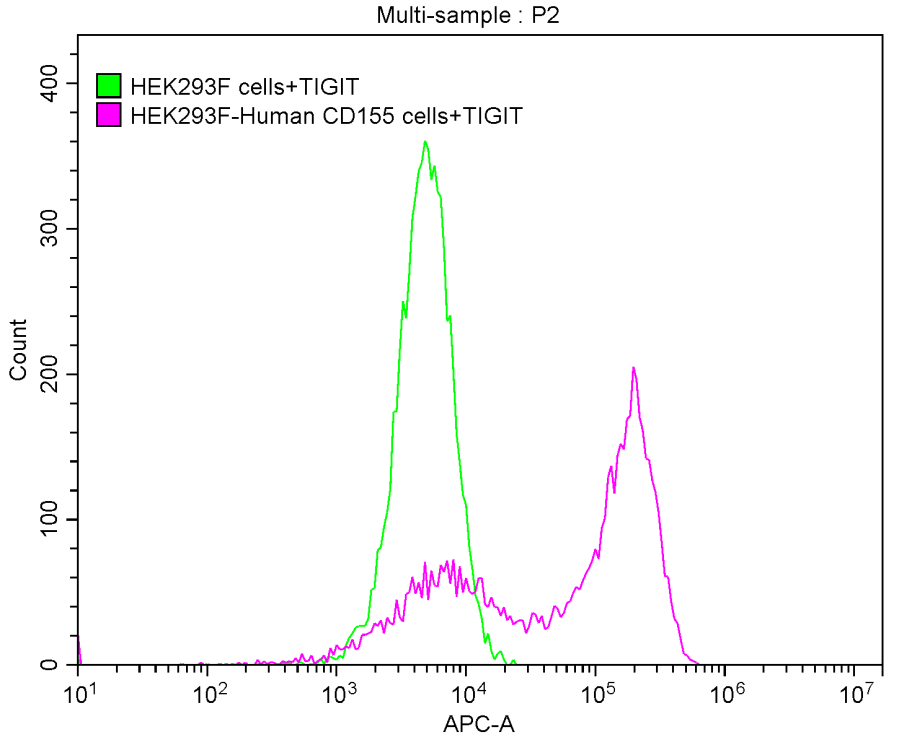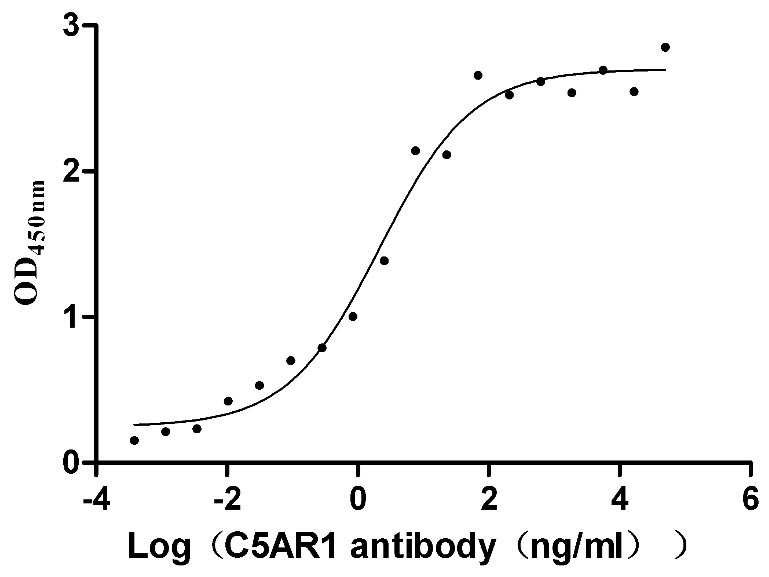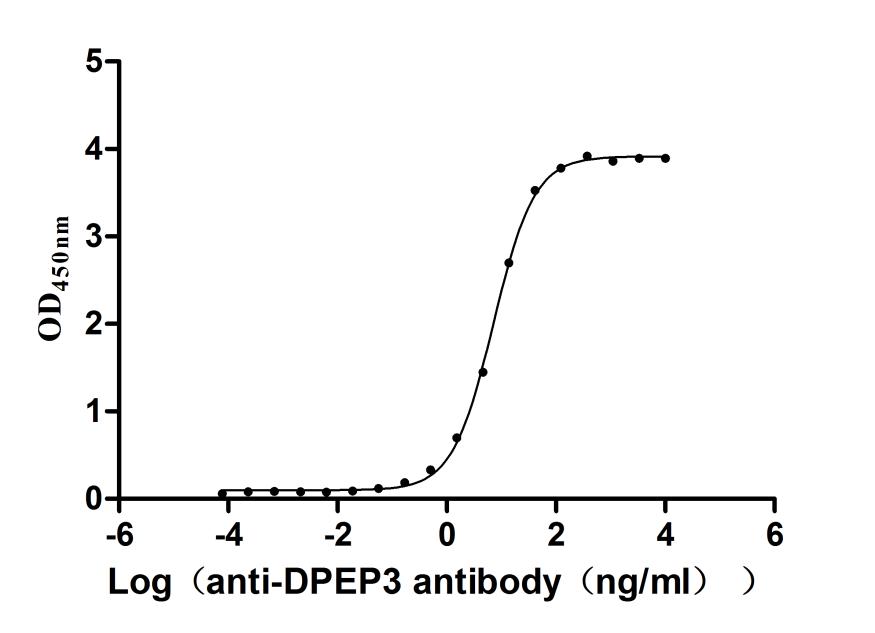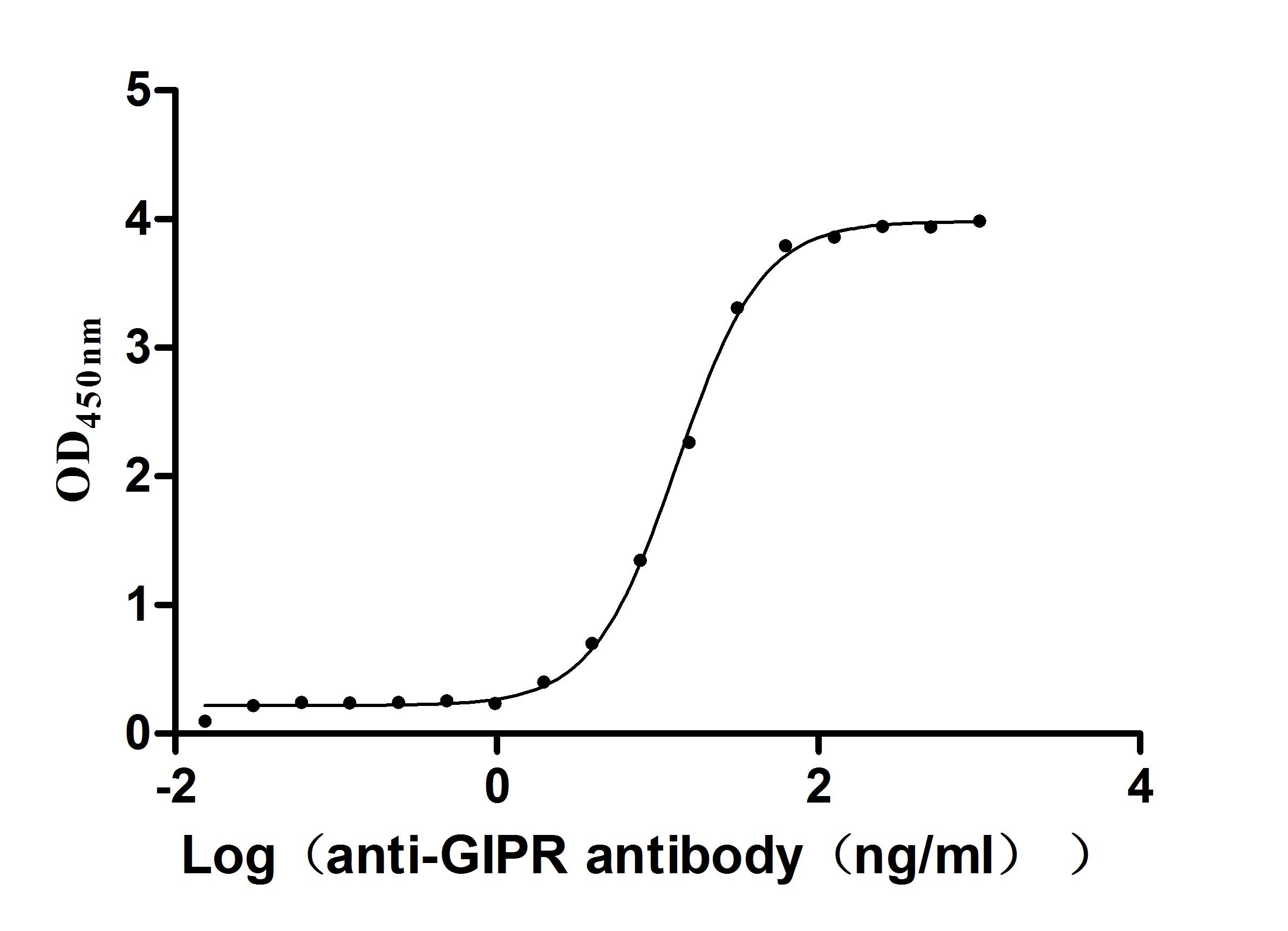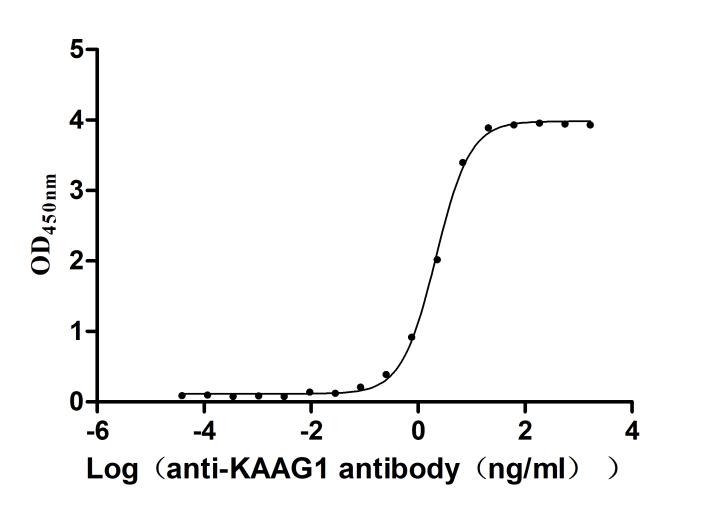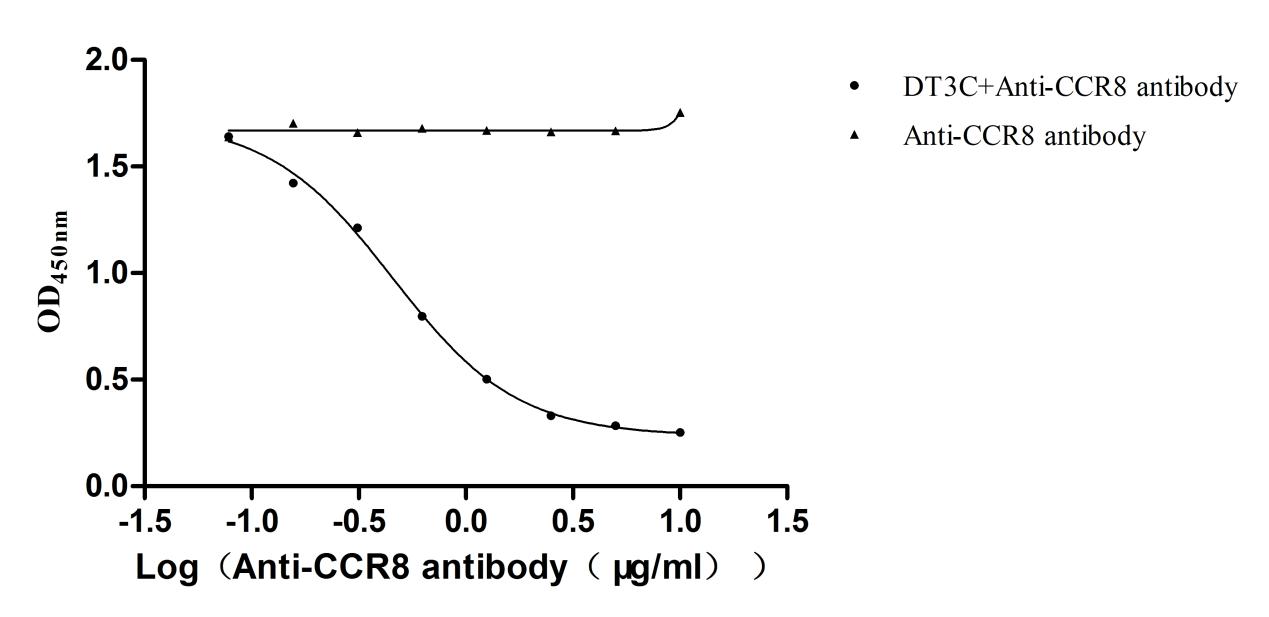Recombinant Mouse Sarcoplasmic/endoplasmic reticulum calcium ATPase 2 (Atp2a2), partial
-
中文名称:Recombinant Mouse Sarcoplasmic/endoplasmic reticulum calcium ATPase 2(Atp2a2) ,partial
-
货号:CSB-YP002333MO
-
规格:
-
来源:Yeast
-
其他:
-
中文名称:Recombinant Mouse Sarcoplasmic/endoplasmic reticulum calcium ATPase 2(Atp2a2) ,partial
-
货号:CSB-EP002333MO
-
规格:
-
来源:E.coli
-
其他:
-
中文名称:Recombinant Mouse Sarcoplasmic/endoplasmic reticulum calcium ATPase 2(Atp2a2) ,partial
-
货号:CSB-EP002333MO-B
-
规格:
-
来源:E.coli
-
共轭:Avi-tag Biotinylated
E. coli biotin ligase (BirA) is highly specific in covalently attaching biotin to the 15 amino acid AviTag peptide. This recombinant protein was biotinylated in vivo by AviTag-BirA technology, which method is BriA catalyzes amide linkage between the biotin and the specific lysine of the AviTag.
-
其他:
-
中文名称:Recombinant Mouse Sarcoplasmic/endoplasmic reticulum calcium ATPase 2(Atp2a2) ,partial
-
货号:CSB-BP002333MO
-
规格:
-
来源:Baculovirus
-
其他:
-
中文名称:Recombinant Mouse Sarcoplasmic/endoplasmic reticulum calcium ATPase 2(Atp2a2) ,partial
-
货号:CSB-MP002333MO
-
规格:
-
来源:Mammalian cell
-
其他:
产品详情
-
纯度:>85% (SDS-PAGE)
-
基因名:
-
Uniprot No.:
-
别名:Atp2a2Sarcoplasmic/endoplasmic reticulum calcium ATPase 2; SERCA2; SR Ca(2+)-ATPase 2; EC 7.2.2.10; Calcium pump 2; Calcium-transporting ATPase sarcoplasmic reticulum type; slow twitch skeletal muscle isoform; Endoplasmic reticulum class 1/2 Ca(2+) ATPase
-
种属:Mus musculus (Mouse)
-
蛋白长度:Partial
-
蛋白标签:Tag type will be determined during the manufacturing process.
The tag type will be determined during production process. If you have specified tag type, please tell us and we will develop the specified tag preferentially. -
产品提供形式:Lyophilized powder
Note: We will preferentially ship the format that we have in stock, however, if you have any special requirement for the format, please remark your requirement when placing the order, we will prepare according to your demand. -
复溶:We recommend that this vial be briefly centrifuged prior to opening to bring the contents to the bottom. Please reconstitute protein in deionized sterile water to a concentration of 0.1-1.0 mg/mL.We recommend to add 5-50% of glycerol (final concentration) and aliquot for long-term storage at -20℃/-80℃. Our default final concentration of glycerol is 50%. Customers could use it as reference.
-
储存条件:Store at -20°C/-80°C upon receipt, aliquoting is necessary for mutiple use. Avoid repeated freeze-thaw cycles.
-
保质期:The shelf life is related to many factors, storage state, buffer ingredients, storage temperature and the stability of the protein itself.
Generally, the shelf life of liquid form is 6 months at -20°C/-80°C. The shelf life of lyophilized form is 12 months at -20°C/-80°C. -
货期:Delivery time may differ from different purchasing way or location, please kindly consult your local distributors for specific delivery time.Note: All of our proteins are default shipped with normal blue ice packs, if you request to ship with dry ice, please communicate with us in advance and extra fees will be charged.
-
注意事项:Repeated freezing and thawing is not recommended. Store working aliquots at 4°C for up to one week.
-
Datasheet :Please contact us to get it.
靶点详情
-
功能:This magnesium-dependent enzyme catalyzes the hydrolysis of ATP coupled with the translocation of calcium from the cytosol to the sarcoplasmic reticulum lumen. Involved in autophagy in response to starvation. Upon interaction with VMP1 and activation, controls ER-isolation membrane contacts for autophagosome formation. Also modulates ER contacts with lipid droplets, mitochondria and endosomes.; Involved in the regulation of the contraction/relaxation cycle. Acts as a regulator of TNFSF11-mediated Ca(2+) signaling pathways via its interaction with TMEM64 which is critical for the TNFSF11-induced CREB1 activation and mitochondrial ROS generation necessary for proper osteoclast generation. Association between TMEM64 and SERCA2 in the ER leads to cytosolic Ca(2+) spiking for activation of NFATC1 and production of mitochondrial ROS, thereby triggering Ca(2+) signaling cascades that promote osteoclast differentiation and activation.
-
基因功能参考文献:
- Pin1 serves as a modulator of SERCA2a and Na(2+)/Ca(2+) exchanger 1 Ca(2+) handling proteins, with loss of function resulting in impaired cardiomyocyte relaxation. PMID: 29018025
- Pep2.5 prevented the down-regulation of SERCA2 expression in a) murine heart samples obtained from mice with sepsis and b) in cardiomyocytes exposed to serum from septic shock patients. Thus, we speculate that Pep2.5 may be able to prevent down-regulation of cardiac SERCA2 expression in patients with sepsis. PMID: 27853260
- The findings support a salutary role of TLR9 in some subsets of HF conditions and underline the importance for future studies on the mechanisms of TLR9 in diastolic HF. PMID: 28490840
- Our results indicate that changes in cell shape changed nuclear morphology and then the gene expression of IP3R1 and SERCA2, which produced different intracellular calcium transient patterns. PMID: 28962833
- VMP1 modulates SERCA2 activity to control endoplasmic reticulum contacts for autophagosome formation. PMID: 28890335
- Nevertheless, the functional role of protein serotonylation in controlling SAN automaticity is largely unexplored. In this study, we screened the cardiomyocytes proteins and found that sarco(endo)plasmic reticulum Ca ATPase type 2a (SERCA2a) can be serotonylated. Simulation studies using mathematical SAN cell model showed that variation of Ca(2+) affinity of SERCA2a pump cause either tachycardia or bradycardia. PMID: 27780728
- Muscle RANK deletion had no significant effects on the sham or denervated slow-twitch soleus muscles. These data identify a novel role for RANK as a key regulator of Ca(2+)storage and SERCA activity, ultimately affecting denervated skeletal muscle function. PMID: 26825123
- Generated were mice harboring N-ethyl-N-nitrosourea (ENU)-induced allelic mutations in Serca2: three missense mutations and one nonsense mutation. Mice harboring these Serca2 mutations developed tumors that were categorized as either early onset squamous cell tumors (SCT), with development similar to null-type knockout mice [2,4] (aggressive form; M682, M814), or late onset tumors (mild form; M1049, M1162). PMID: 27131742
- Identify Atrap as a novel regulatory protein of the cardiac Ca(2+)-ATPase SERCA2a. Suggest that Atrap enhances the activity of SERCA2a and, consequently, facilitates ventricular relaxation. PMID: 27015675
- Sustained activation of Toll-like receptor 9 causes cardiac and systemic inflammation, and deterioration of SERCA2a depletion-mediated diastolic heart failure. PMID: 26461521
- The LRP1/Pyk2 axis represses SERCA2 mRNA expression via HIF-1a. PMID: 25968337
- This first-in-class small-molecule activator targeting SERCA2a SUMOylation may serve as a potential therapeutic strategy for treatment of heart failure PMID: 26068603
- privileged signal communication between the beta1-adrenergic receptor and SERCA2a impaired in cardiac hypertrophy PMID: 25917898
- These data reveal myofibrillar Ca(2+)-sensitivity to be an important determinant of the cardiac effects of SERCA2 haploinsufficiency and raise the possibility that Darier disease patients are more susceptible to heart failure under certain conditions. PMID: 26064889
- SEPN1 enhances SERCA2 activity by reducing luminal cysteines that are hyperoxidized by ERO1-generated peroxides. PMID: 25452428
- SERCA 2 and ERO1 mediate endothelial cell and macrophage angiogenic response to ischemia/hypoxia. PMID: 25260714
- AMPK directly relaxes vascular smooth muscle cell by a decrease of [Ca(2+)]i. This is achieved by calcium sequestration via SERCA activation, as well as activation of BKCa channels. PMID: 26034200
- The results of this study indicate that post-translational modifications of SERCA2a caused by the toxic environment of the hypertrophied and failing myocardium can be prevented by SUMO-1. PMID: 24893265
- ERK activation is sufficient to reduce SERCA2 mRNA. PMID: 25008120
- The promoter regions of the SERCA-2A and beta-MHC genes, Atp2a2 and Myh7, respectively in murine hearts after one or eight weeks of pressure overload induced by transverse aortic constriction, were evaluated. PMID: 25181347
- AMPKalpha2 influences the regulation of SERCA2a mRNA in type I skeletal muscle fibers following exercise training PMID: 24876362
- Expression of sarcoplasmic/endoplasmic reticulum calcium ATPase (SERCA) 2, phospholamban, ryanodine receptor 2 and calsequestrin 2 was significantly decreased in 28- versus 10-week-old CryalphaB R120G transgenic mice. PMID: 24825000
- miR-151-3p directly targets ATP2a2, a gene encoding for a slow skeletal and cardiac muscle specific Ca(2+) ATPase, SERCA2 thus downregulating slow muscle gene expression. PMID: 25200835
- Sphingosine 1-phosphate is a novel regulator of SERCA2 that activates CaMKII signaling and mediates adiponectin-induced cardioprotection. PMID: 24852843
- Suggest Pak1 is required to maintain ventricular Ca(2+) homeostasis and electrophysiological stability and implicate Pak1 as a novel regulator of cardiac SERCA2a through a transcriptional mechanism. PMID: 25217043
- Results indicate sarco-endoplasmic reticulum calcium ATPase 2b (SERCA2b) as a transcriptional target of Pancreatic and duodenal homeobox protein 1 (Pdx-1). PMID: 25271154
- High fat high sucrose diet upregulated Nox2, induced inflammation, increased irreversible SERCA oxidation, and suppressed the response of aortic SERCA to nitric oxide. PMID: 24631774
- Nox2 targets SERCA in response to a high fat high sugar diet. PMID: 24704899
- TLR9 stimulation reduces SERCA2 activity, modulating calcium handling between the sarcoplasmic/endoplasmic reticulum and mitochondria. PMID: 24610369
- hind limb muscle ischemia induced S-glutathione adducts on SERCA2 in both whole muscle tissue and endothelial cells PMID: 24920669
- ex vivo function of isolated SERCA2 KO hearts is severely impaired PMID: 24223976
- SERCA2b is one of the molecules that maintains endoplasmic reticulum calcium levels during oscillations. PMID: 24101727
- Long-term levosimendan treatment improves both contractility and relaxation in a heart-failure model with marked diastolic dysfunction due to reduced calcium transients in Serca2 knockout mice. PMID: 24072410
- Reduced cardiomyocyte SERCA2 activity leads to mechanical dysfunction and also energetic dysfunction. PMID: 24486508
- I-1 and sarco/endoplasmic reticulum Ca2+ -ATPase synergistically induce the vascular smooth muscle cell contractile phenotype. PMID: 24249716
- increased beta-adrenergic stimulation is a potentially highly significant compensatory mechanism by which cardiac function is maintained in Serca2 KO mice PMID: 23528094
- MAPKAPK-2 and MAPKAP-3 regulate SERCA2a expression and fiber type composition to modulate skeletal muscle and cardiomyocyte function. PMID: 23608535
- Enhanced myocardial contractility in PDE3A-knockout hearts increased sarcoplasmic reticulum calcium ATPase type 2a activity. PMID: 23168336
- The important role of SAR in maintaining Ca(2+) transport activity of SERCA2a and cardiac function in the senescent population, is reported. PMID: 22119571
- These findings suggest that local changes in Ca(2+) homeostasis may play an important signaling role in phospholamban-SERCA double knockout mice, perhaps due to reduced microdomain Ca(2+) buffering by SERCA2b. PMID: 22505640
- functional interactions of SERCA2b and Bcl-2 in the cell may be modulated by HSP70 and other chaperones and stress-regulated proteins. PMID: 22360692
- analysis of extreme sarcoplasmic reticulum volume loss and compensatory T-tubule remodeling after Serca2 knockout PMID: 22355118
- Aggregation of SERCA2 mutant protein induced endoplasmic reticulum stress and apoptosis in keratinocytes. PMID: 22045735
- Data suggest that the CaMKIIdeltaB-induced imbalance between NCX1 and SERCA2 is partially responsible for the disturbance of intracellular Ca(2) homeostasis and the pathological process of heart failure. PMID: 21931829
- Sex differences affected the response of myocardial tissues in dealing with cardiac endoplasmic reticulum stress in part through the regulation of SERCA2, CHOP, Ire1alpha and TRAF2. PMID: 20850991
- This study evaluated the role of SERCA2b and SERCA3 in the control of the free calcium concentration in the endoplasmic reticulum and the role of SERCA3 in the control of insulin secretion. PMID: 21885870
- data show that SUMOylation is a critical post-translational modification that regulates SERCA2a function, and provide a platform for the design of novel therapeutic strategies for heart failure PMID: 21900893
- We show that in cultured embryonic cardiomyocytes hypoxia (1% O(2)) induce time-dependent downregulation of SERCA2a expression. PMID: 21382378
- In ventricular cardiomyocytes with reduced SERCA2 abundance, Ca(2+) wave development following beta-adrenergic stimulation is potentiated. PMID: 21242164
- Results suggests that reduced SERCA2 abundance or function may contribute to the phenotype of heart failure also through induction of endoplasmic reticulum/sarcoplasmic reticulum stress responses. PMID: 20965565
显示更多
收起更多
-
亚细胞定位:Endoplasmic reticulum membrane; Multi-pass membrane protein. Sarcoplasmic reticulum membrane; Multi-pass membrane protein.
-
蛋白家族:Cation transport ATPase (P-type) (TC 3.A.3) family, Type IIA subfamily
-
组织特异性:Isoform 2 is highly expressed in heart and slow twitch skeletal muscle. Isoform 2 is widely expressed.
-
数据库链接:
Most popular with customers
-
Recombinant Human T-cell immunoreceptor with Ig and ITIM domains (TIGIT), partial (Active)
Express system: Mammalian cell
Species: Homo sapiens (Human)
-
Recombinant Human C5a anaphylatoxin chemotactic receptor 1 (C5AR1)-VLPs (Active)
Express system: Mammalian cell
Species: Homo sapiens (Human)
-
Recombinant Human Intestinal-type alkaline phosphatase (ALPI) (Active)
Express system: Mammalian cell
Species: Homo sapiens (Human)
-
Recombinant Human Dipeptidase 3(DPEP3), partial (Active)
Express system: Mammalian cell
Species: Homo sapiens (Human)
-
Recombinant Macaca fascicularis Gastric inhibitory polypeptide receptor (GIPR), partial (Active)
Express system: yeast
Species: Macaca fascicularis (Crab-eating macaque) (Cynomolgus monkey)
-
Recombinant Human Kidney-associated antigen 1(KAAG1) (Active)
Express system: E.coli
Species: Homo sapiens (Human)
-
Recombinant DT3C (Diphtheria toxin & spg 3C domain) for Antibody Internalization Assay (Active)
Express system: E.coli
Species: N/A


